All About Affirmative Action
When society gives benefits and privileges to a specific member based on a perceived notion of superiority, or an assumption of inferiority of the competing party, we consider that to be wrong. That’s discrimination, right?
And yet, this has been an integral part of American society since its conception. Racism. Sexism. Bigotry. Ignorance. Entire groups of people have been ostracized, alienated, and disadvantaged as a result. So, what can we do to help ensure that everyone has a shot at true equality and their own version of the American dream?
That’s where affirmative action comes into the picture.
What Is Affirmative Action?

Affirmative action refers to the policies the federal government, an institution, or organization puts in place to engage and promote opportunities to less fortunate communities. Through affirmative action implementation, historically excluded groups are given advantages and incentives in higher education and employment to account for their disadvantage in American society. The aim is to give everyone an equal opportunity, and not just false promises.
Calls for affirmative action began during reconstruction when the issues of civil rights, equal opportunity, and equal employment began becoming more mainstream, and calls for education and opportunity for the underprivileged became a topic of conversation.
This conversation began as a way to give equal rights to those of all races, sexes, and statuses, and has recently evolved into affording to those less fortunate the privileges already afforded to white counterparts.
Debate Surrounding Affirmative Action
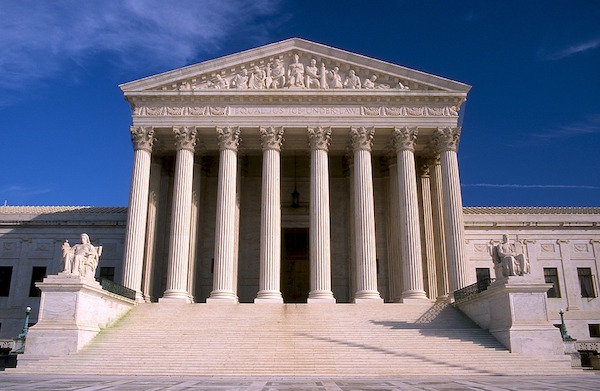
Affirmative action is no longer just about equal employment opportunity for African-American individuals, women, and minorities. It has also moved into the college admissions process, giving students opportunities they wouldn’t otherwise have due to their upbringing.
In College Admissions
Many colleges take diversity into account in their admissions policies, which opponents say gives underrepresented minorities an unfair advantage over equally or more qualified applicants.
In 2012, Abigail Fisher, a white woman, filed a lawsuit against the University of Texas concerning its "race-conscious policy." In the lawsuit, Fisher, then a student at Louisiana State University, claimed that she was denied admission because of her race, violating the 14th Amendment. The Supreme court sent the case back to the lower court, and in 2014, the U.S. Court of Appeals for the Fifth Circuit ruled that the UT could continue its "holistic" admissions process and affirmative action policy.
Fisher's lawyers refiled the case in 2015, and the Supreme Court ruled that UT's affirmative action policy was constitutional.
The use of affirmative action in college admissions decisions has been contested by non-majority groups as well. Also in 2015, a coalition representing more than 60 Asian-American organization filed complaints against Harvard University, alleging that Harvard's admissions policies discrimination against Asian-American applicants. The lawsuit claims Harvard employs "racial quotas" in its admissions practices that discriminate against Asian-American students and will go to trial in October of 2018.
In the Workplace
Affirmative action is sometimes used in hiring and promotional practices in the workplace, prompting backlash from some employees and workers.
For example, in 2009, 20 New Haven Fire Department firefighters, 19 white and one Hispanic, filed a lawsuit claiming the city of New Haven had failed to promote them after they had passed the test for promotions to management positions. The city rendered the results invalid because no black firefighter who took the test had passed. In the case of Ricci v. DeStefano, the Supreme Court ruled in favor of the complainants, saying that New Haven had violated Title VII of the Civil Rights Act.
The History of Affirmative Action: A Timeline of Events
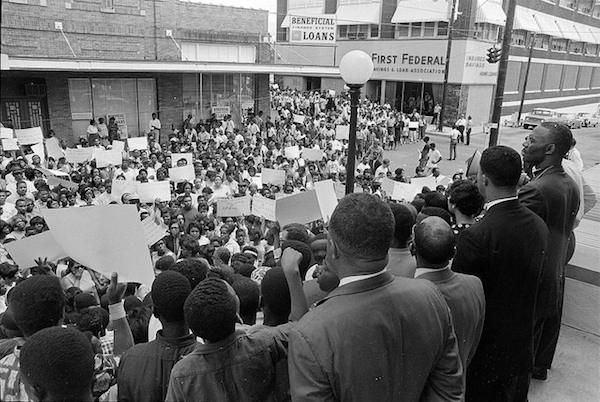
Affirmative action itself is a direct response to the 1960s civil rights movement, but its conception was a much lengthier, intricate process. What began as a process for increased diversity has launched into a full-fledged, nationwide campaign. Here’s a timeline of all the obstacles along the way.
June 25, 1941: President Franklin D. Roosevelt signs Executive Order 8802.
FDR signed Executive Order 8802 to outlaw discrimination in the federal government and defense industries based on sex, color, race, national origin, and creed. This was to boost the workforce as World War II neared for the States, pushing women, African Americans, Asian Americans, and other minorities into the workforce.
March 6, 1961: “Affirmative Action” makes its first appearance in Executive Order 10925.
The Committee On Equal Employment Opportunity is created by President John F. Kennedy via Executive Order 10925. To ensure that projects being funded through federal administered funds aren’t discriminating based on race, they must take “affirmative action” to uphold non-bias employment techniques. This was directed at federal contractors.
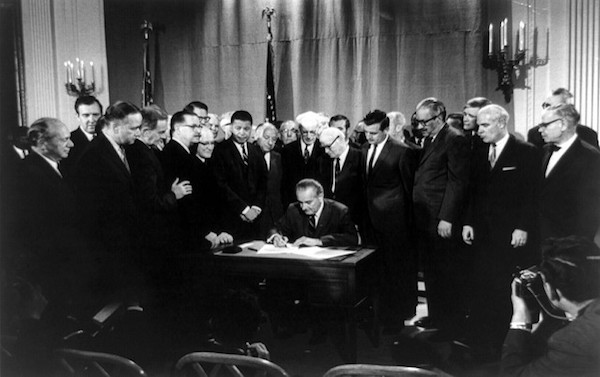
July 2, 1964: President Lyndon B. Johnson signs the Civil Rights Act.
This piece of legislation banned discrimination of any kind against people based on race, color, religion, or national origin. It was one of the most comprehensive pieces of civil rights legislation up until this time. This was a key piece of legislation against racial discrimination during the civil rights movement, and it pushed people to begin thinking about how to enact an affirmative action plan.
June 4, 1965: President Lyndon B. Johnson defines affirmative action.
In a speech at Howard University, Johnson details the importance of affirmative action and how he hopes it will affect civil rights and equality:
"This is the next and more profound stage of the battle for civil rights. We seek not just freedom but opportunity—not just legal equity but human ability—not just equality as a right and a theory, but equality as a fact and as a result."
Sept. 24, 1965: Affirmative action is enforced in law for the first time with Executive Order 11246.
This executive order was issued by President Lyndon B. Johnson, and it was the first clear and direct call to action when it came to affirmative action. It required federal contractors to take “affirmative action” when it came down to hiring minorities as employees. It set out specific guidelines in its affirmative actions plan that employers had to follow to ensure that people of color had equal rights and opportunities throughout the hiring process.
Oct. 13, 1967: Executive Order 11246 gets amended.
Executive Order 11246 is given an amendment to protect against discrimination based on gender.
1969: The Philadelphia Plan is created.
A plan initiated by President Richard Nixon, The Philadelphia Plan was a strict and detailed guide for guaranteeing affirmative action techniques were being used. Its first trial run was with construction jobs in Philadelphia as many asserted that the construction industry was one of worst offenders when it came down to hiring unfairly.
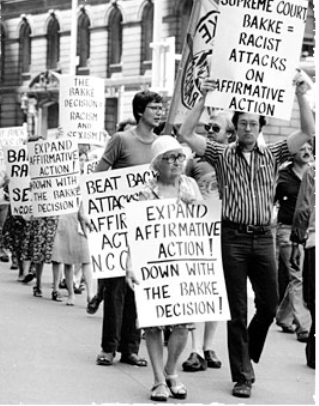
June 28, 1978: A landmark court case sets the stage for the future of affirmative action.
The Supreme Court Case Regents of the University of California v. Bakke put restrictions on the execute order surrounding affirmative action in higher education. The court ruled that universities couldn’t refuse to admit someone because they weren’t a minority while giving minorities the position at the school for which they had little to no qualifications. This, the court ruled, would lead to reverse discrimination.
Allan Bakke stated that rejecting him based on race, of which he was white, to encourage a more diverse student body was a violation of the Equal Protection Clause in the Fourth Amendment. The court ruled 5-4 in his favor. This was just the first case to touch on the complexities of affirmative action, but it was not the last
July 2, 1980: Some quotas for affirmative action are kept in place with the case Fullilove v. Klutznick.
Two years prior, the Bakke case made strict quotas unconstitutional, but with Fullilove v. Klutznick, certain mid-level quotas were in fact ruled constitutional. There is a federal law that stipulates 15% of funds that go to public work must be used for qualified minorities. The court ruled that the affirmative action executive order did not violate the constitution with this requirement.
May 19, 1986: Supreme Court rules against the school board in Wygant v. Jackson Board of Education.
In this case, a school district had a policy of firing non-minority employees instead of minority employees even though those fired had clear seniority. The court ruled against them on the basis that previous obstacles a minority student had to jump through did not mean non-minority groups had to later suffer:
"Though hiring goals may burden some innocent individuals, they simply do not impose the same kind of injury that layoffs impose. Denial of a future employment opportunity is not as intrusive as loss of an existing job."
Feb. 25, 1987: Court finds systematic discrimination in the State of Alabama Department of Public Safety.
United States v. Paradise was a case about discrimination in Alabama. The court ordered that since the department had never hired a black trooper, they needed to take a look at their policies and perform a full-fledged state reform of its affirmative action and discrimination policies.
When 12 years came and went and no change was made, the courts enacted quotas that the department had to meet. For every white person hired or promoted, a person of color too had to be hired or promoted. This would continue until eventually 25% of the department was made up of people of color. When this ruling was challenged, it was held up by The Supreme Court.
Jan. 23, 1989: Affirmative action is challenged and ruled a “highly suspect tool.”
In the case of City of Richmond v. Croson, the legality of affirmative action programs in Richmond, Virginia were challenged. Programs at both the state and local levels put 30% of construction funds aside for businesses owned by minorities. The Supreme Court ruled against affirmative action in this case, saying that just because there was perceived discrimination in the construction industry before, does not mean that this strict quota should continue now.
This set a new standard for affirmative action, making it more of a case-by-case problem because previous discrimination would have to first be proven and seen as a problem.
June 12, 1995: Federal affirmative action policies are scrutinized.
In the case of Adarand Constructors, Inc. v. Peña, the court again ruled in favor of stricter scrutiny when it came to federal affirmative action policies and programs. The phrase “strict scrutiny” morphed into the idea that these affirmative action programs had to show and require a “compelling governmental interest,” and had to be custom fit for each situation as opposed to being a broad and general blanket of policies.

July 19, 1995: President Clinton calls for affirmative action reform.
In both a speech and a White House memorandum, President Bill Clinton called for stricter standards when it came to affirmative action policies. He also called for reform that was reaffirmed by systematic racism and discrimination that continued to permeate the country which was a response to previous affirmative action policies.
In the memorandum, he called for the elimination of policies that: instilled a quota; gave preferences to unqualified individuals; gave way to reverse discrimination; or continued after its goals had been met.
Nov. 3, 1997: Proposition 209 is enacted in California.
In California, Proposition 209 was enacted which put a statewide ban on all forms of affirmative action in California. After a year in the courts, the ban went into effect.
"The state shall not discriminate against, or grant preferential treatment to, any individual or group on the basis of race, sex, color, ethnicity, or national origin in the operation of public employment, public education, or public contracting."
Dec. 3, 1998: Initiative 200 is enacted in the state of Washington.
Initiative 200 was another ban on statewide affirmative action policies. This made Washington the second state to abolish all of its state affirmative action measures.
Feb. 22, 2000: Florida bans race from factoring in on college admission.
Affirmative action was abolished in the state of Florida as a part of Governor Jeb Bush’s “One Florida” initiative.
Dec. 13, 2000: Affirmative action upheld as a part of the University of Michigan’s undergrad affirmative action policy.
In the case Gratz v. Bollinger, a federal court ruled in favor of the University of Michigan’s constitutional right to use race as a factor in the undergraduate admissions process.
The school argued that in much the same way preferential treatment is given to children of alumni, and those in certain fields and with certain scholarships, the Michigan affirmative action policy gives preferential treatment to groups that have been systematically underprivileged. A minority student that didn’t have the same advantaged growing up could still have hope to get a good education with these policies.
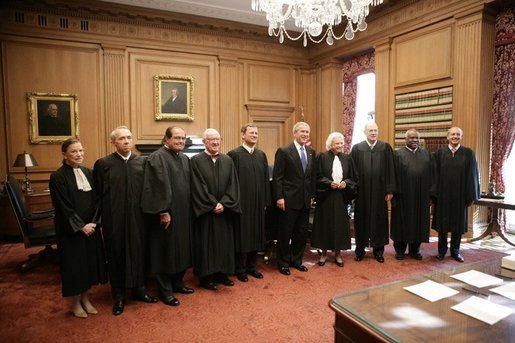
June 23, 2003: The Supreme Court upholds the constitutionality of affirmative action policies in university admissions.
In a 5-4 vote, The Supreme Court ruled in favor of affirmative action policies in the admissions process. This was the most influential case involving affirmative action since the University of California vs. Bakke. This decision upheld the policies of the University of Michigan Law School. This set a precedent for universities across the country, giving disadvantaged Americans hope in cases to come.
June 28, 2006: Affirmative action sees a setback.
In cases Parents v. Seattle and Meredith v. Jefferson, The Supreme Court ruled against using racial considerations for integrating schools. The 5-4 rulings stated the in both cases and both schools, trying to maintain a diverse school environment by assigning certain students to certain schools was unconstitutional.
November 4, 2008: Affirmative action is on the ballot in Nebraska and Colorado.
In both Nebraska and Colorado, measures were included on the ballots that proposed banning affirmative action based on race and gender. In Nebraska, the ban passed with over half the Americans in the state voting in favor. In Colorado, however, the ban did not pass.
June 29, 2009: The Supreme Court rules in favor of firefighters.
In the case Ricci v. DeStefano, 18 plaintiffs argued that the 2003 lieutenant and captain exam results were tossed because not enough people of color qualified for the promotion. Fearing that this would upset the public and cause a liability to the city, officials threw out the exam which led to the plaintiffs having to retake a new exam. They claimed that this was an instance of reverse racial discrimination according to Title VII of the Civil Rights Act of 1964. The court ruled in their favor with a 5-4 decision. The court stated that the city of New Haven's "action in discarding the tests was a violation of Title VII."
On July 15, 2014: Federal Appeals court upholds the proper use of affirmative action at the University of Texas at Austin.
In a 2-1 ruling, the federal appeals court upholds the decision that ruled in favor of the University of Texas at Austin which held that their affirmative action policies in regards to admissions were constitutional.
April 22, 2014: The Michigan affirmative action ban on considering race in the admissions process is upheld by The Supreme Court.
Michigan previously added an amendment to the state’s constitution banning universities across the state from considering race when looking at college applications. And in the case of Schuette v. Coalition to Defend Affirmative Action, the court ruled 6-2 in favor of the ban. This was not a ruling on the constitutionality of affirmative action, but the process of a state being allowed to create an amendment to its own constitution. The court ruled in favor because there is nothing in the constitution that guarantees “minority groups victory in the political process.”
June 23, 2016: Affirmative action upheld by The Supreme Court.
Under the equal protection clause, The Supreme Court ruled by a 4-3 vote that affirmative action was indeed legal, a major victory in the affirmative action debate.
Affirmative Action Today

Today, the debate around affirmative actions rages on. There are many who are anti-affirmative action given its vague, and broad nature. Some see it itself as a way of discriminating and getting in the way of real equality and justice. Some say it’s not broad enough, the affirmative action plan too general and unable to truly fight against discrimination based on race, gender, status, origin, and sexual orientation.
But the fight isn’t over. Even with a recent win in The Supreme Court, there are still those that are fighting back against affirmative action.
In July of 2018, the Trump administration announced its opposition to Obama administration policies that called for colleges and universities to use race as a factor in broadening campus diversity. The New York Times reported that the Education and Justice Departments jointly announced that they had rescinded seven of the Obama administration's affirmative action-related policy guidelines, claiming they “advocate policy preferences and positions beyond the requirements of the Constitution.”
These new policies could impact future affirmative action legislation and cases, especially as Trump's second Supreme Court nominee, Brent Kavanaugh, are already underway. Now-retired Justice Anthony Kennedy served as the swing vote in many affirmative action cases, including Fisher v. the University of Texas, and his replacement could tip the balance in favor of more conservative decisions.
--
Original article by Kristina Udice; additional research, editing and writing by Laura Berlinsky-Schine.
Why women love us:
- Daily articles on career topics
- Jobs at companies dedicated to hiring more women
- Advice and support from an authentic community
- Events that help you level up in your career
- Free membership, always
